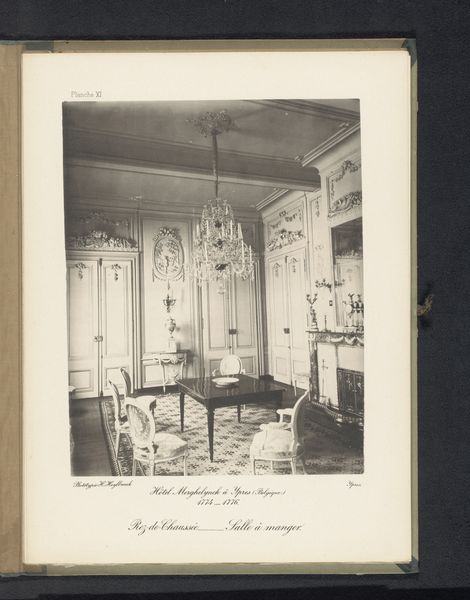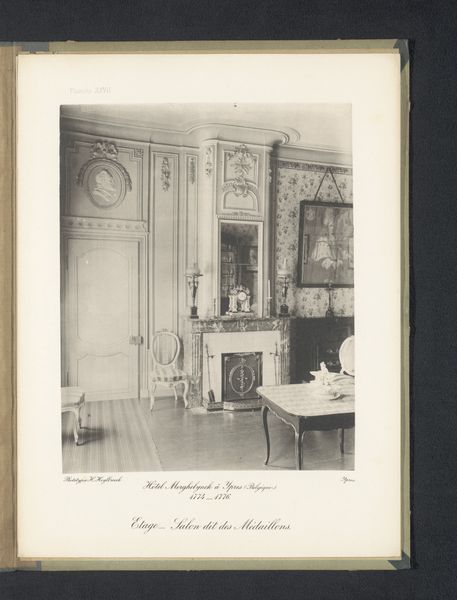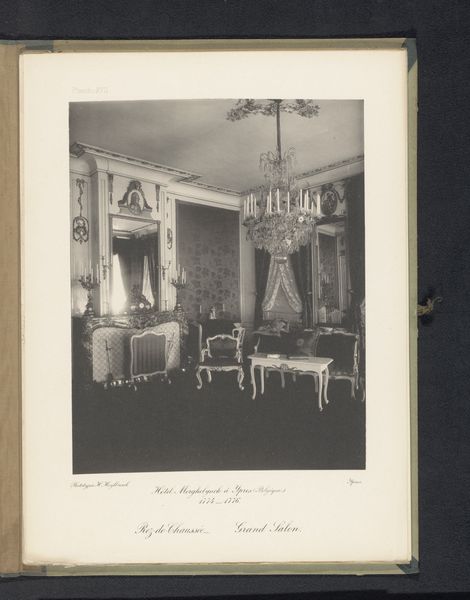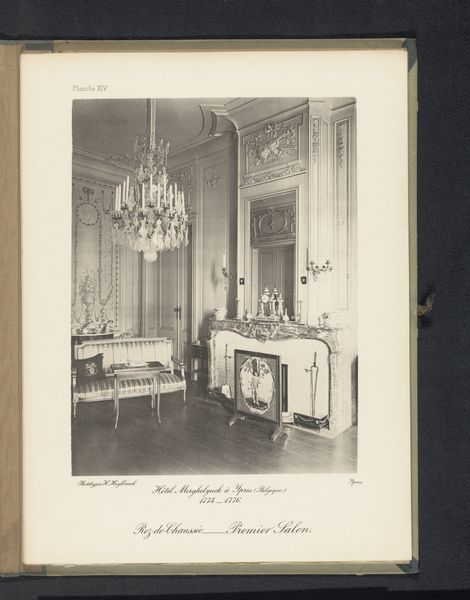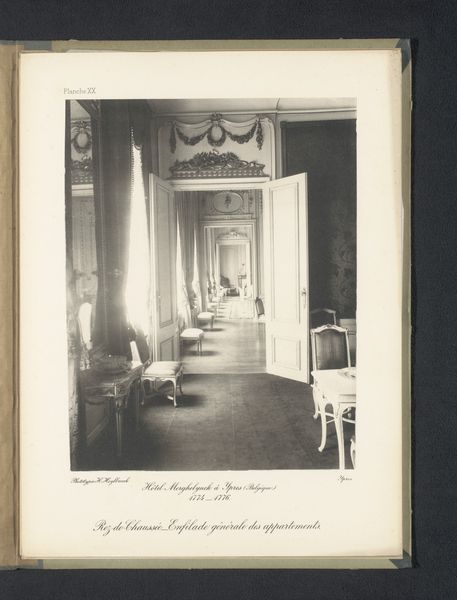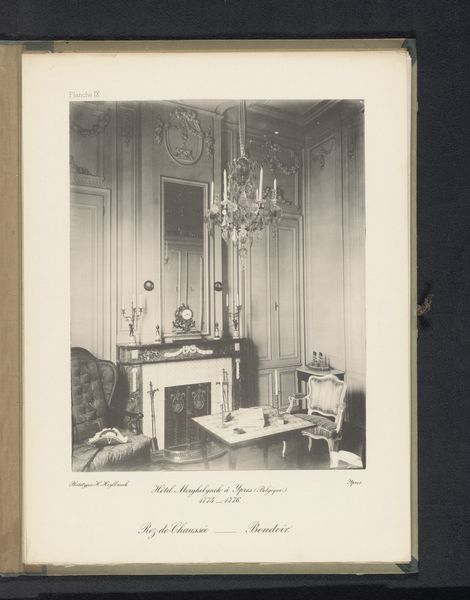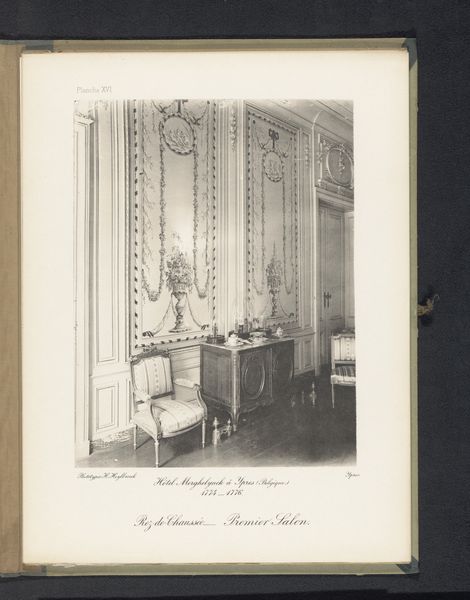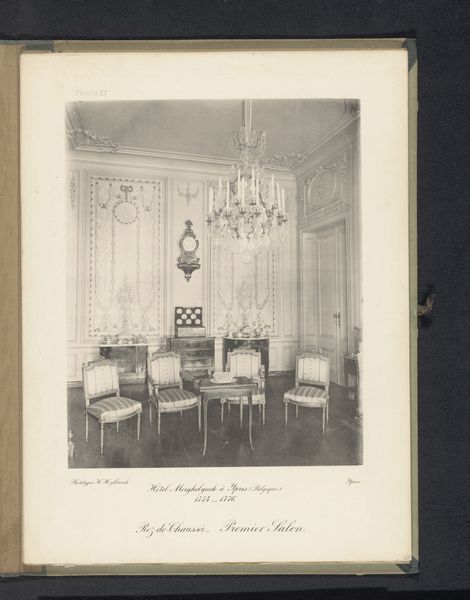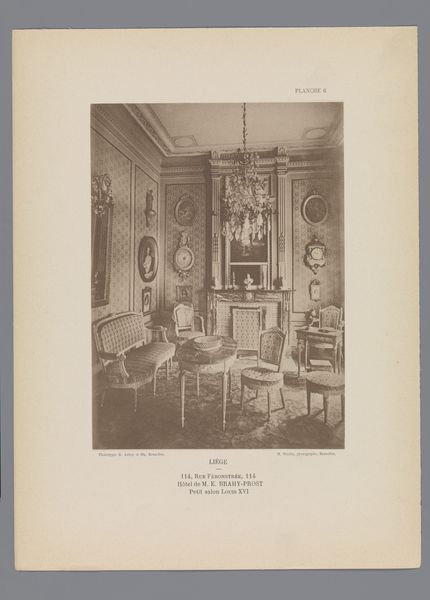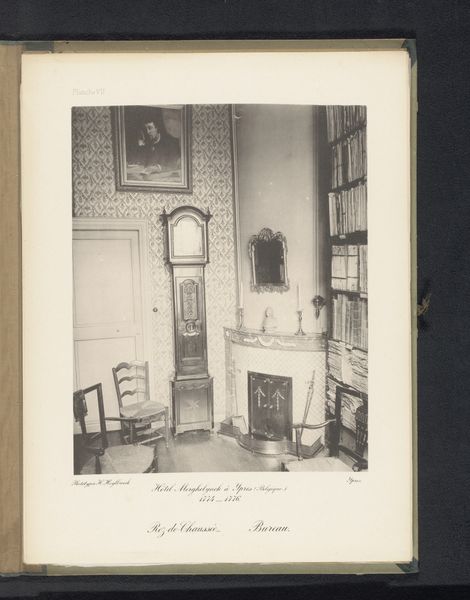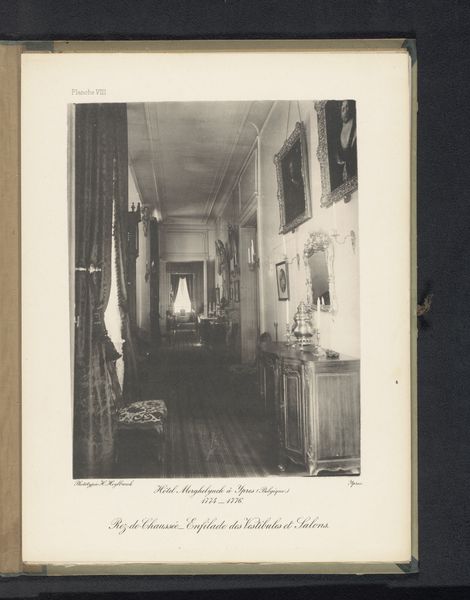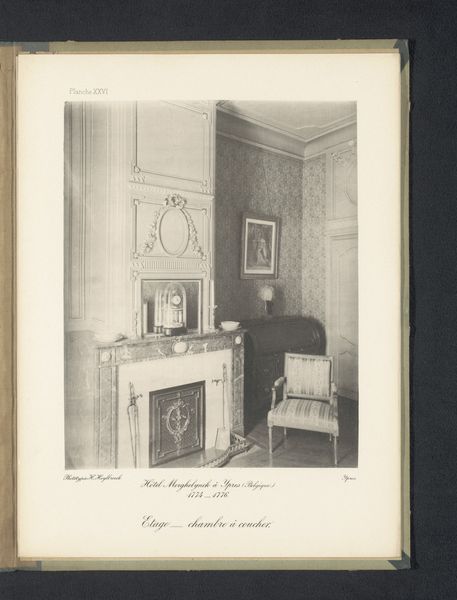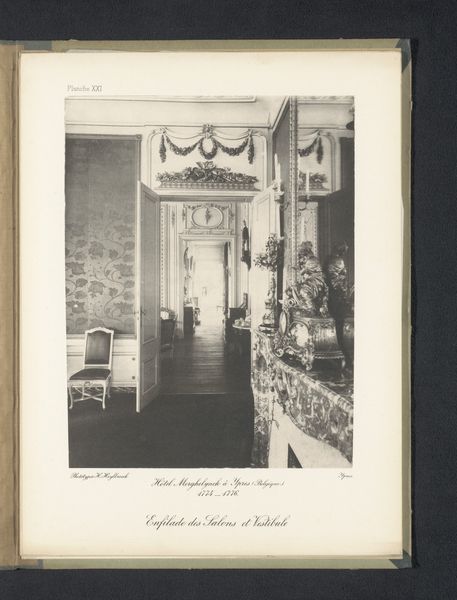
Eetkamer op de begane grond van Hotel Merghelynck in Ieper, België before 1894
0:00
0:00
Dimensions: height 274 mm, width 212 mm
Copyright: Rijks Museum: Open Domain
Curator: Here we have a photograph titled, “Eetkamer op de begane grond van Hotel Merghelynck in Ieper, België," or Dining Room on the Ground Floor of the Hotel Merghelynck in Ypres, Belgium. It was taken before 1894 by Hector Heylbroeck. It's a stunning baroque interior. Editor: It’s like stepping into a black and white dream, all sharp angles and delicate adornments. Makes me wonder about the echoes trapped within those walls. Curator: Absolutely, you can almost hear the clinking of silverware and whispered conversations. Given the baroque style, the eye is drawn to all the ornament—look at the plasterwork on the walls, that ornate mantle, and, of course, the enormous crystal chandelier hanging overhead. It creates such a dense visual experience, one almost overwhelmed by detail. Editor: True, the density is remarkable, but I’m more intrigued by the unseen hands that labored over every square inch. From the unseen glassblowers to the plasterers and finishers, this room is built upon a complex system of production and consumption. It is really the fruits of a great many different laborers here, presented to be seen as a harmonious and singular thing. Curator: That’s a fascinating point. Thinking about all those workers, the photo becomes so much more layered and complex. It adds this undercurrent to the elegance, almost an urgency… Editor: Precisely! We’re conditioned to view images like these through a romanticized lens. Thinking of it through the context of material brings us closer to its true story, as well as challenging some pretty engrained notions of art. It reminds us art's inextricably linked to the economics, class and labor practices of the time. Curator: I’ll never look at a chandelier the same way again. Hector Heylbroeck may have captured a beautiful room, but he's also unknowingly captured a world. Editor: It's a reminder that luxury isn’t just about surfaces, but it represents an unseen tapestry woven by human hands. The perfect pairing: a tangible snapshot of baroque art, and a reminder of production and making that existed then...and still exists now.
Comments
No comments
Be the first to comment and join the conversation on the ultimate creative platform.
